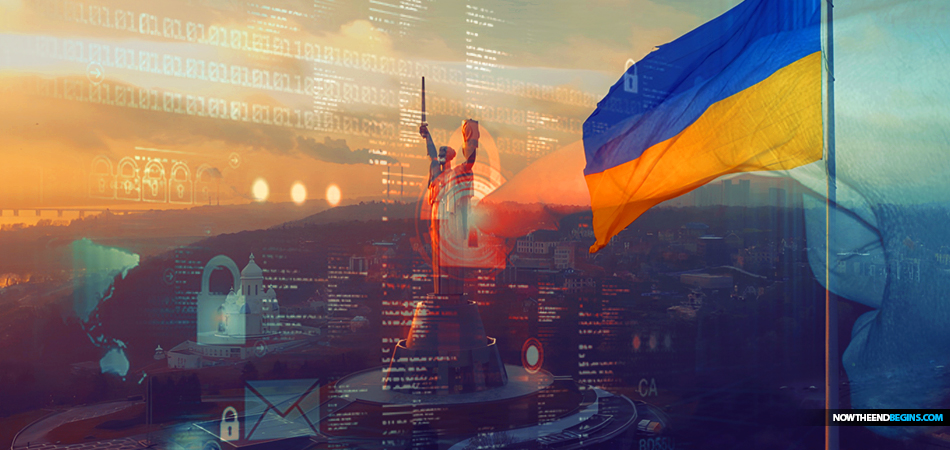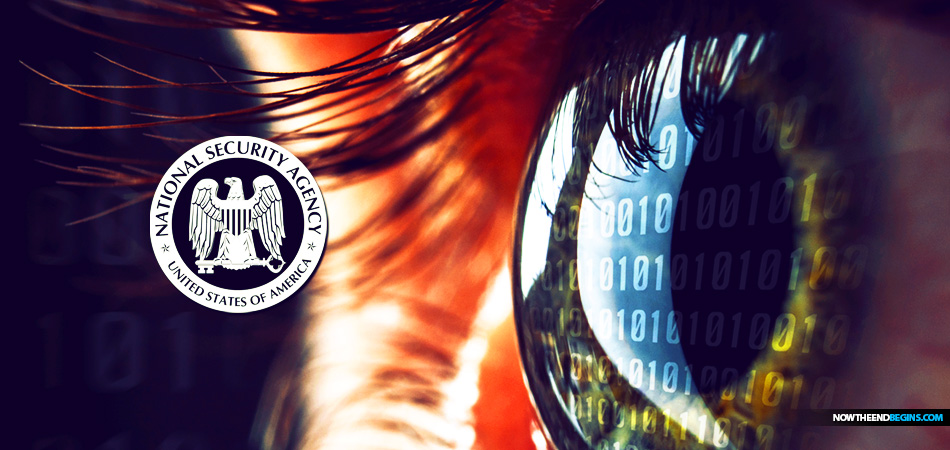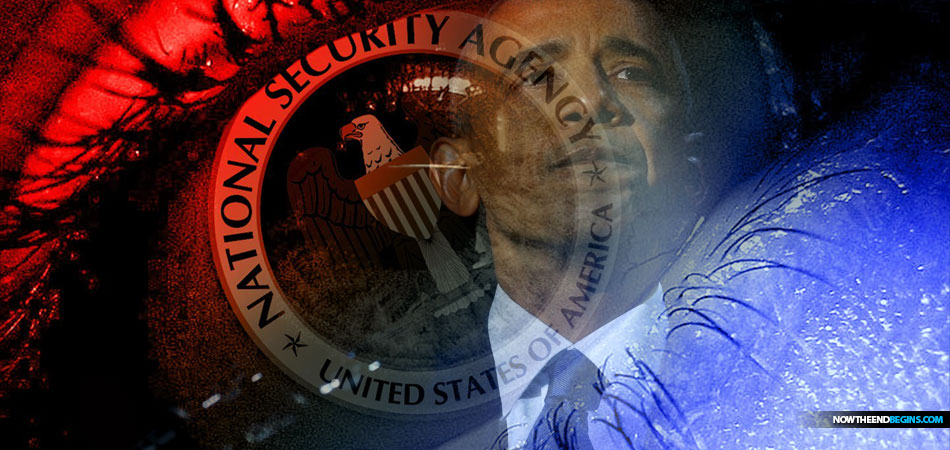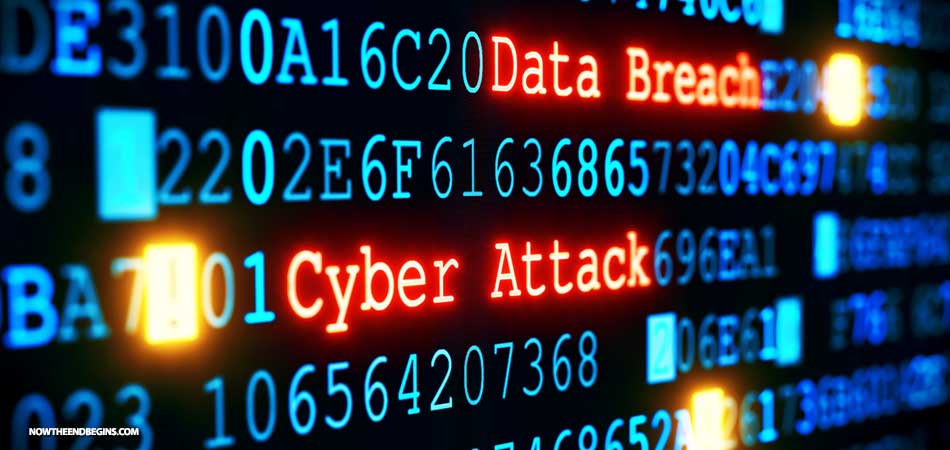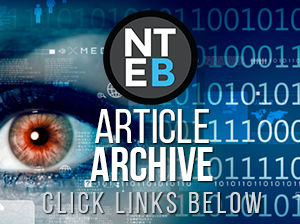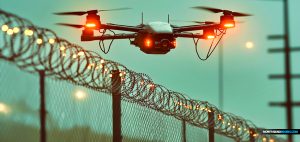Cyberwar
Largest Global Cyber Attack In History By Hacker Group Shadow Brokers Leaves World Governments Stunned
Ransomware attackers are using an SMB exploit leaked by the Shadow Brokers last month to fuel a massive ransomware outbreak that exploded online today.
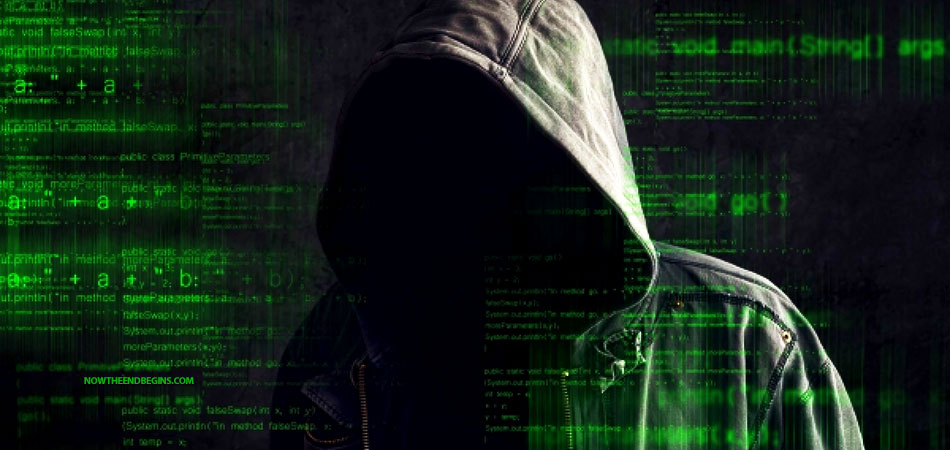
Ransomware attackers are using an SMB exploit leaked by the Shadow Brokers last month to fuel a massive ransomware outbreak that exploded online today, making victims all over the world in huge numbers
Dozens of countries were hit with a huge cyber-extortion attack Friday that locked up computers and held users’ files for ransom at a multitude of hospitals, companies and government agencies.
It was believed to the biggest attack of its kind ever recorded. The malicious software behind the onslaught appeared to exploit a vulnerability in Microsoft Windows that was supposedly identified by the National Security Agency for its own intelligence-gathering purposes and was later leaked to the internet.
Britain’s national health service fell victim, its hospitals forced to close wards and emergency rooms and turn away patients. Russia appeared to be the hardest hit, according to security experts, with the country’s Interior Ministry confirming it was struck.
All told, several cybersecurity firms said they had identified the malicious software, which so far has been responsible for tens of thousands of attacks, in more than 60 countries. That includes the United States, although its effects there didn’t appear to be widespread, at least initially.
The attack infected computers with what is known as “ransomware” — software that locks up the user’s data and flashes a message demanding payment to release it. In the U.S., FedEx reported that its Windows computers were “experiencing interference” from malware, but wouldn’t say if it had been hit by ransomware.
Russia’s interior ministry said Friday that some of its computers had been hit by a “virus attack” amid reports of major cyber strikes across the globe
Ministry spokeswoman Irina Volk told Russian news agencies it had “recorded a virus attack on the ministry’s personal computers controlled by a Windows operating system.”
“The virus has been localised. Technical work is under way to destroy it and renew the means of virus protection,” she said.
Volk added that some 1,000 computers — less than one percent of their total number — had been affected, Interfax reported. By late Friday the attacks had spread to more than 74 countries, according to security firms tracking the spread. Kaspersky Lab, a Russian cybersecurity firm, said Russia was the worst-hit, followed by Ukraine, India and Taiwan. Reports of attacks also came from Latin America and Africa.
The connection to the N.S.A. was particularly chilling. Starting last summer, a group calling itself the “Shadow Brokers” began to post software tools that came from the United States government’s stockpile of hacking weapons.
The attacks on Friday appeared to be the first time a cyberweapon developed by the N.S.A., funded by American taxpayers and stolen by an adversary had been unleashed by cybercriminals against patients, hospitals, businesses, governments and ordinary citizens.

Cyberwar
Massive Global Cyberattack With Petya Virus Hits Computers From America To Russia And All Across Europe
Computer experts were calling it the Petya virus, and said that it was similar to the WannaCry attack, which spread quickly across much of Asia and Europe.
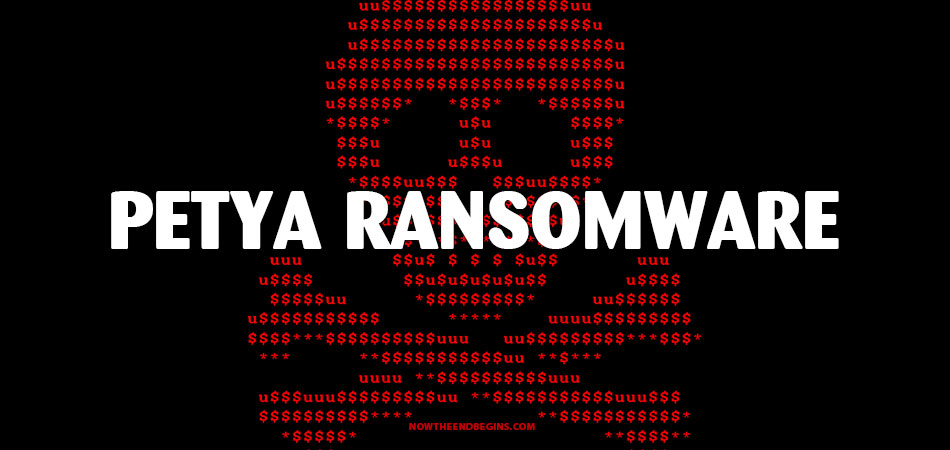
Computer experts were calling it the Petya virus, and said that it was similar to the WannaCry attack, which spread quickly across much of Asia and Europe. Others cautioned, however, that it could be yet another type of ransomware.
EDITOR’S NOTE: These nasty, ugly and crippling ransomware viruses are transmitted largely via email attachments. When you click on them, it activates the virus lurking in the attachment. If you are not sure who is sending you the email do not click on any of the attachments inside it. Always look at the sender’s full email address before deciding to click on it. Oftentimes the emails will say it’s from a well-known company like Amazon, but the return email address will say something different.
“We are urgently responding to reports of another major ransomware attack on businesses in Europe,” Rob Wainwright, executive director of Europol, Europe’s police agency, said on Twitter.
At least nine European countries had been targeted in the latest attack, said Dan Smith, an information security researcher at Radware, a cybersecurity firm. “I first saw reports of this attack around 8 a.m. Eastern time coming from Ukraine, but it’s too early to tell who’s behind this,” Mr. Smith said.
Researchers at the computer security company Symantec said the new attack was using the same hacking tool created by the National Security Agency that was used in the WannaCry attacks. Called Eternal Blue, the tool was among dozens leaked online last April by a group known as the Shadow Brokers. The N.S.A. has not acknowledged its tools were used in WannaCry or other attacks.
The vulnerability used by Eternal Blue was patched by Microsoft last April, but as the WannaCry attacks demonstrated, hundreds of thousands of organizations around the world failed to properly install the patch. But researchers at F-Secure, the Finnish cybersecurity firm, also noted that the ransomware used at least two other vectors to spread, beyond Eternal Blue, which suggests even those who used the Microsoft patch could be vulnerable.
Nasty Petya virus ransomware spreading fast:
“Just because you roll out a patch doesn’t mean it’ll be put in place quickly,” said Carl Herberger, vice president of security at Radware. “The more bureaucratic an organization is, the higher chance it won’t have updated its software.”
Immediate reports that the computer virus was a variant of Petya suggest the attackers will be hard to trace. Petya was for sale on the so-called dark web, where its creators made the ransomware available as “ransomware as a service” — a play on Silicon Valley terminology for delivering software over the internet, according to the security firm Avast Threat Labs.
That means anyone can launch the ransomware with the click of a button, encrypt someone’s systems and demand a ransom to unlock it. If the victim pays, the authors of the Petya ransomware, who call themselves Janus Cybercrime Solutions, get a cut of the payment.
That distribution model means that pinning down the individuals responsible for Tuesday’s attack could be difficult, if nearly impossible.
The attack is actually “an improved and more lethal version of WannaCry,” according to Matthieu Suiche, a security researcher who helped contain the spread of the WannaCry ransomware last month when he created a so-called kill switch that stopped the attacks from spreading.
Over just the past seven days, Mr. Suiche noted that WannaCry had attempted to hit an additional 80,000 organizations, but was prevented from executing attack code because of the kill switch.
On Tuesday, Mr. Suiche said there was no kill switch for the Petya attacks. The Petya attacks could be worse than WannaCry, said Chris Hinkley, a researcher at Armor, the security firm, because these attacks encrypt and lock entire hard drives, while the earlier ransomware attacks locked only individual files.
But researchers at the security company Kaspersky Labs questioned whether the attack was something other than what has been described as the Petya attacks. The company’s data indicates around 2,000 users have been attacked so far.
In Ukraine, the Infrastructure Ministry, the postal service, the national railway company, and one of the country’s largest communications companies, Ukrtelecom, have been affected, Volodymyr Omelyan, the country’s infrastructure minister, said in a Facebook post.
Officials for the metro system in Kiev, the country’s capital, said card payments could not be accepted at the moment because of the attack. The national power grid company Kievenergo had to switch off all of its computers because of the attack, but the situation was under control, according to the Interfax-Ukraine news agency. Metro Group, a German company that runs wholesale food stores, said its operations in Ukraine had been affected, and that it was “analyzing the possible effects.”
Computer systems at the Chernobyl nuclear plant were also shut down. The computers collected data on radiation levels, and were not connected to industrial systems at the site, where, though all reactors have been decommissioned, huge volumes of radioactive waste remain. Operators said radiation monitoring was being done manually.
In Russia, Home Credit bank, one of the country’s top 50 lenders, was paralyzed, with all of its offices closed, according to the RBC news website.
“All offices can only offer consultations to clients, no banking operations are now possible,” said Artyom Moskvin, a bank teller at Home Credit’s central office in Moscow, though he denied the situation was connected to the hacking attack. “The bank is currently checking its security systems. Everything should go back to normal tomorrow.”
The attack also affected Evraz, a steel manufacturing and mining company that employs around 80,000 people, the RBC website reported.
A spokeswoman for Maersk confirmed that computer systems were down because of the attack. She said the company had been hit across different business units and sites, but declined to confirm Spanish media reports that Maersk’s operations at Spanish ports, including Algeciras and Valencia, were shut down by the attack.
Analysts have been warning that hackers are increasingly likely to use such ransomware attacks to gain access to people’s computers, both in a bid to cause major global disruption and for financial gain.
That was the case with the recent WannaCry computer virus, which attacked networks at hospitals in the United Kingdom, automakers’ production facilities and German train stations. The recent attacks appear to evade popular antivirus software. In a test of 61 antivirus solutions, only four successfully identified the ransomware. source
Cyberwar
Cyber Attack Feared As Multiple U.S. Cities Hit With Simultaneous Power Grid Failures Over Last 24 Hours
The U.S. power grid appears to have been hit with multiple power outages affecting San Francisco, New York and Los Angeles in a possible cyber attack.

The U.S. power grid appears to have been hit with multiple power outages affecting San Francisco, New York and Los Angeles in what some are now calling a cyber attack
Officials report that business, traffic and day-to-day life has come to a standstill in San Francisco, reportedly the worst hit of the three major cities currently experiencing outages. Power companies in all three regions have yet to elaborate on the cause, though a fire at a substation was the original reason given by San Francisco officials.
A series of subsequent power outages in Los Angeles, San Francisco, and New York City left commuters stranded and traffic backed up on Friday morning. Although the outages occurred around the same time, there is as of yet no evidence that they were connected by anything more than coincidence.
The first outage occurred at around 7:20 a.m. in New York, when the power went down at the 7th Avenue and 53rd Street subway station, which sent a shockwave of significant delays out from the hub and into the rest of the subway system. By 11:30 a.m. the city’s MTA confirmed that generators were running again in the station, although the New York subways were set to run delayed into the afternoon.
Later in the morning, power outages were reported in Los Angeles International Airport, as well as in several other areas around the city.
Via : Inverse
The San Francisco Fire Department was responding to more than 100 calls for service in the Financial District and beyond, including 20 elevators with people stuck inside, but reported no immediate injuries. Everywhere, sirens blared as engines maneuvered along streets jammed with traffic.
Traffic lights were out at scores of intersections, and cars were backing up on downtown streets as drivers grew frustrated and honked at each other.
Via: SF Gate
The cause of the outage has not yet been made clear, though given the current geo-political climate it is not out of the question to suggest a cyber attack could be to blame. It has also been suggested that the current outages could be the result of a secretive nuclear/EMP drill by the federal government.
As we have previously reported, the entire national power grid has been mapped by adversaries of the United States and it is believed that sleep trojans or malware may exist within the computer systems that maintain the grid.
In a 2016 report it was noted that our entire way of life has been left vulnerable to saboteurs who could cause cascading blackouts across the United States for days or weeks at a time:
It isn’t just EMPs and natural disaster that poses a threat to the grid, but there is also the potential for attacks on individual power substations in the vast network of decentralized and largely unguarded power grid chain. A U.S. government study established that there would be “major, extended blackouts if more than three key substations were destroyed.”
Whether by criminals, looters, terrorists, gangs or pranksters, it would take very little to bring down the present system, and there is currently very little the system can do to protect against this wide open threat.
Whether the current outages are the result of a targeted infrastructure cyber attack or simply a coincidence, most Americans think the impossible can’t happen, as The Prepper’s Blueprint author Tess Pennington highlights, a grid-down scenario won’t just be a minor inconvenience if it goes on for more than a day or two:
Consider, for a moment, how drastically your life would change without the continuous flow of energy the grid delivers. While manageable during a short-term disaster, losing access to the following critical elements of our just-in-time society would wreak havoc on the system.
- Challenges or shut downs of business commerce
- Breakdown of our basic infrastructure: communications, mass transportation, supply chains
- Inability to access money via atm machines
- Payroll service interruptions
- Interruptions in public facilities – schools, workplaces may close, and public gatherings.
- Inability to have access to clean drinking water
It is for this reason that we have long encouraged Americans to prepare for this potentially devastating scenario by considering emergency food reserves, clean water reserves and even home defense strategies in the event of a widespread outage. The majority of Americans have about 3 days worth of food in their pantry. Imagine for a moment what Day 4 might look like in any major city that goes dark. source
CIA
TRUMPED: WikiLeaks To Open ‘Vault 7’ Today Revealing Confidential Information On CIA Hacking
Code-named ‘Vault 7’ by WikiLeaks, it is the largest ever publication of confidential documents on the Central Intelligence Agency.
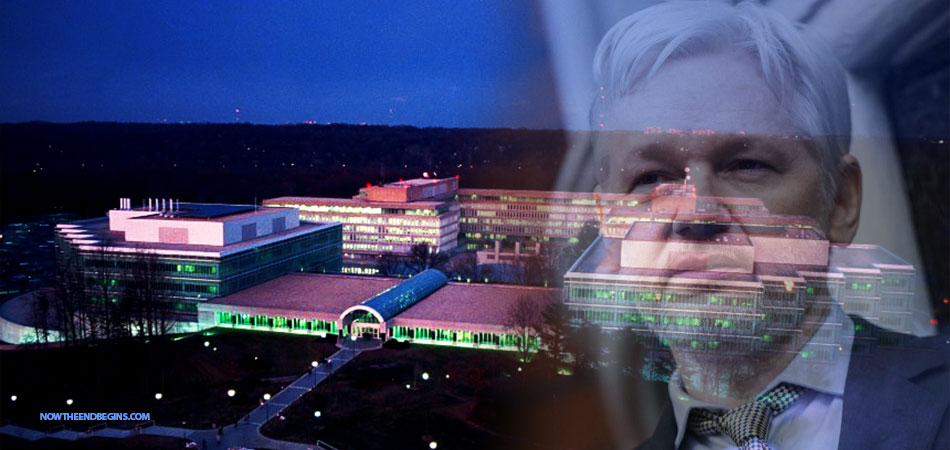
Today, Tuesday 7 March 2017, WikiLeaks begins its new series of leaks on the U.S. Central Intelligence Agency. Code-named “Vault 7” by WikiLeaks, it is the largest ever publication of confidential documents on the agency.
EDITOR’S NOTE: President Trump says he was spied on at Trump Tower the order of Barack Obama, a claim which the Obama Shadow Government denies. Far Left Democrats say Russians hacked the election in collusion with Trump, a claim which the Trump administration denies. He said, she said, right? Maybe not. Today, WikiLeaks announced they are opening ‘Vault 7 ‘ showing leaked emails exposing CIA hacking. Looks like we are about to get some definitive answers.
The first full part of the series, “Year Zero”, comprises 8,761 documents and files from an isolated, high-security network situated inside the CIA’s Center for Cyber Intelligence in Langley, Virgina. It follows an introductory disclosure last month of CIA targeting French political parties and candidates in the lead up to the 2012 presidential election.
Recently, the CIA lost control of the majority of its hacking arsenal including malware, viruses, trojans, weaponized “zero day” exploits, malware remote control systems and associated documentation. This extraordinary collection, which amounts to more than several hundred million lines of code, gives its possessor the entire hacking capacity of the CIA. The archive appears to have been circulated among former U.S. government hackers and contractors in an unauthorized manner, one of whom has provided WikiLeaks with portions of the archive.
Wikileaks Vault 7 & The 5 W’s Explained:
“Year Zero” introduces the scope and direction of the CIA’s global covert hacking program, its malware arsenal and dozens of “zero day” weaponized exploits against a wide range of U.S. and European company products, include Apple’s iPhone, Google’s Android and Microsoft’s Windows and even Samsung TVs, which are turned into covert microphones.
Since 2001 the CIA has gained political and budgetary preeminence over the U.S. National Security Agency (NSA). The CIA found itself building not just its now infamous drone fleet, but a very different type of covert, globe-spanning force — its own substantial fleet of hackers. The agency’s hacking division freed it from having to disclose its often controversial operations to the NSA (its primary bureaucratic rival) in order to draw on the NSA’s hacking capacities.
By the end of 2016, the CIA’s hacking division, which formally falls under the agency’s Center for Cyber Intelligence (CCI), had over 5000 registered users and had produced more than a thousand hacking systems, trojans, viruses, and other “weaponized” malware. Such is the scale of the CIA’s undertaking that by 2016, its hackers had utilized more code than that used to run Facebook. The CIA had created, in effect, its “own NSA” with even less accountability and without publicly answering the question as to whether such a massive budgetary spend on duplicating the capacities of a rival agency could be justified.
In a statement to WikiLeaks the source details policy questions that they say urgently need to be debated in public, including whether the CIA’s hacking capabilities exceed its mandated powers and the problem of public oversight of the agency. The source wishes to initiate a public debate about the security, creation, use, proliferation and democratic control of cyberweapons.
Once a single cyber ‘weapon’ is ‘loose’ it can spread around the world in seconds, to be used by rival states, cyber mafia and teenage hackers alike.
Julian Assange, WikiLeaks editor stated that “There is an extreme proliferation risk in the development of cyber ‘weapons’. Comparisons can be drawn between the uncontrolled proliferation of such ‘weapons’, which results from the inability to contain them combined with their high market value, and the global arms trade. But the significance of “Year Zero” goes well beyond the choice between cyberwar and cyberpeace. The disclosure is also exceptional from a political, legal and forensic perspective.”
Wikileaks has carefully reviewed the “Year Zero” disclosure and published substantive CIA documentation while avoiding the distribution of ‘armed’ cyberweapons until a consensus emerges on the technical and political nature of the CIA’s program and how such ‘weapons’ should analyzed, disarmed and published.
Wikileaks has also decided to redact and anonymise some identifying information in “Year Zero” for in depth analysis. These redactions include ten of thousands of CIA targets and attack machines throughout Latin America, Europe and the United States. While we are aware of the imperfect results of any approach chosen, we remain committed to our publishing model and note that the quantity of published pages in “Vault 7” part one (“Year Zero”) already eclipses the total number of pages published over the first three years of the Edward Snowden NSA leaks. source
-

 George Soros9 years ago
George Soros9 years agoProof Of George Soros Nazi Past Finally Comes To Light With Discovery Of Forgotten Interview
-

 Election 20169 years ago
Election 20169 years agoDEAD POOL DIVA: Huma Abedin Kept Those Hillary Emails That The FBI Found In A Folder Marked ‘Life Insurance’
-

 Election 20169 years ago
Election 20169 years agoCrooked Hillary Campaign Used A Green Screen At Today’s Low Turnout Rally In Coconut Creek FL
-

 George Soros9 years ago
George Soros9 years agoSORE LOSER: George Soros Declares War On America As Violent MoveOn.Org Protests Fill The Streets
-

 Donald Trump9 years ago
Donald Trump9 years agoDonald Trump Will Be 70 Years, 7 Months And 7 Days Old On First Full Day In Office As President
-

 Headline News9 years ago
Headline News9 years agoIf Hillary Is Not Guilty, Then Why Are Her Supporters Asking Obama To Pardon Her? Hmm…
-

 Election 20169 years ago
Election 20169 years agoWikiLeaks Shows George Soros Controlling Vote With 16 States Using SmartMatic Voting Machines
-

 End Times9 years ago
End Times9 years agoFalse Teacher Beth Moore Endorses The Late Term Partial-Birth Abortion Candidate Crooked Hillary


